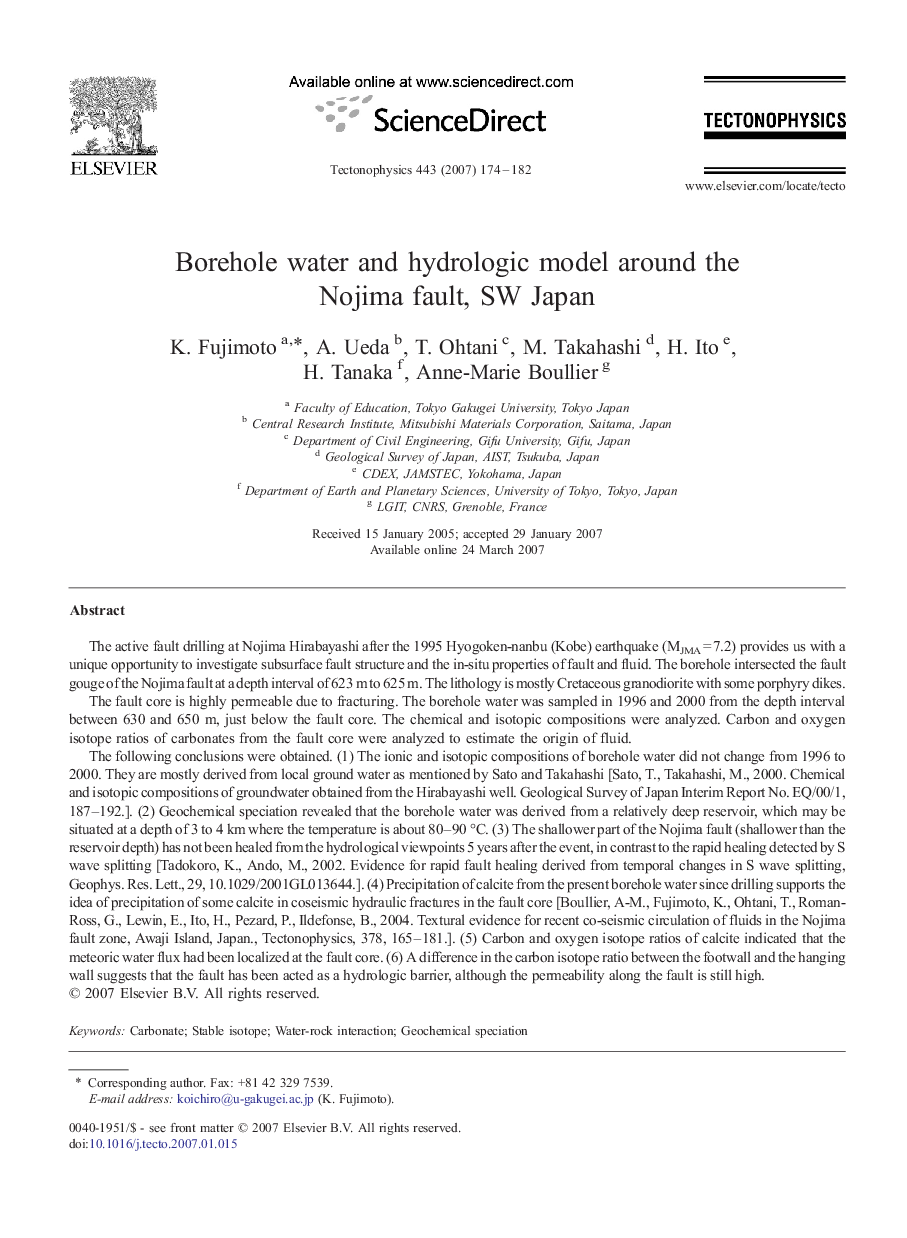| Article ID | Journal | Published Year | Pages | File Type |
|---|---|---|---|---|
| 4694786 | Tectonophysics | 2007 | 9 Pages |
The active fault drilling at Nojima Hirabayashi after the 1995 Hyogoken-nanbu (Kobe) earthquake (MJMA = 7.2) provides us with a unique opportunity to investigate subsurface fault structure and the in-situ properties of fault and fluid. The borehole intersected the fault gouge of the Nojima fault at a depth interval of 623 m to 625 m. The lithology is mostly Cretaceous granodiorite with some porphyry dikes.The fault core is highly permeable due to fracturing. The borehole water was sampled in 1996 and 2000 from the depth interval between 630 and 650 m, just below the fault core. The chemical and isotopic compositions were analyzed. Carbon and oxygen isotope ratios of carbonates from the fault core were analyzed to estimate the origin of fluid.The following conclusions were obtained. (1) The ionic and isotopic compositions of borehole water did not change from 1996 to 2000. They are mostly derived from local ground water as mentioned by Sato and Takahashi [Sato, T., Takahashi, M., 2000. Chemical and isotopic compositions of groundwater obtained from the Hirabayashi well. Geological Survey of Japan Interim Report No. EQ/00/1, 187–192.]. (2) Geochemical speciation revealed that the borehole water was derived from a relatively deep reservoir, which may be situated at a depth of 3 to 4 km where the temperature is about 80–90 °C. (3) The shallower part of the Nojima fault (shallower than the reservoir depth) has not been healed from the hydrological viewpoints 5 years after the event, in contrast to the rapid healing detected by S wave splitting [Tadokoro, K., Ando, M., 2002. Evidence for rapid fault healing derived from temporal changes in S wave splitting, Geophys. Res. Lett., 29, 10.1029/2001GL013644.]. (4) Precipitation of calcite from the present borehole water since drilling supports the idea of precipitation of some calcite in coseismic hydraulic fractures in the fault core [Boullier, A-M., Fujimoto, K., Ohtani, T., Roman-Ross, G., Lewin, E., Ito, H., Pezard, P., Ildefonse, B., 2004. Textural evidence for recent co-seismic circulation of fluids in the Nojima fault zone, Awaji Island, Japan., Tectonophysics, 378, 165–181.]. (5) Carbon and oxygen isotope ratios of calcite indicated that the meteoric water flux had been localized at the fault core. (6) A difference in the carbon isotope ratio between the footwall and the hanging wall suggests that the fault has been acted as a hydrologic barrier, although the permeability along the fault is still high.
